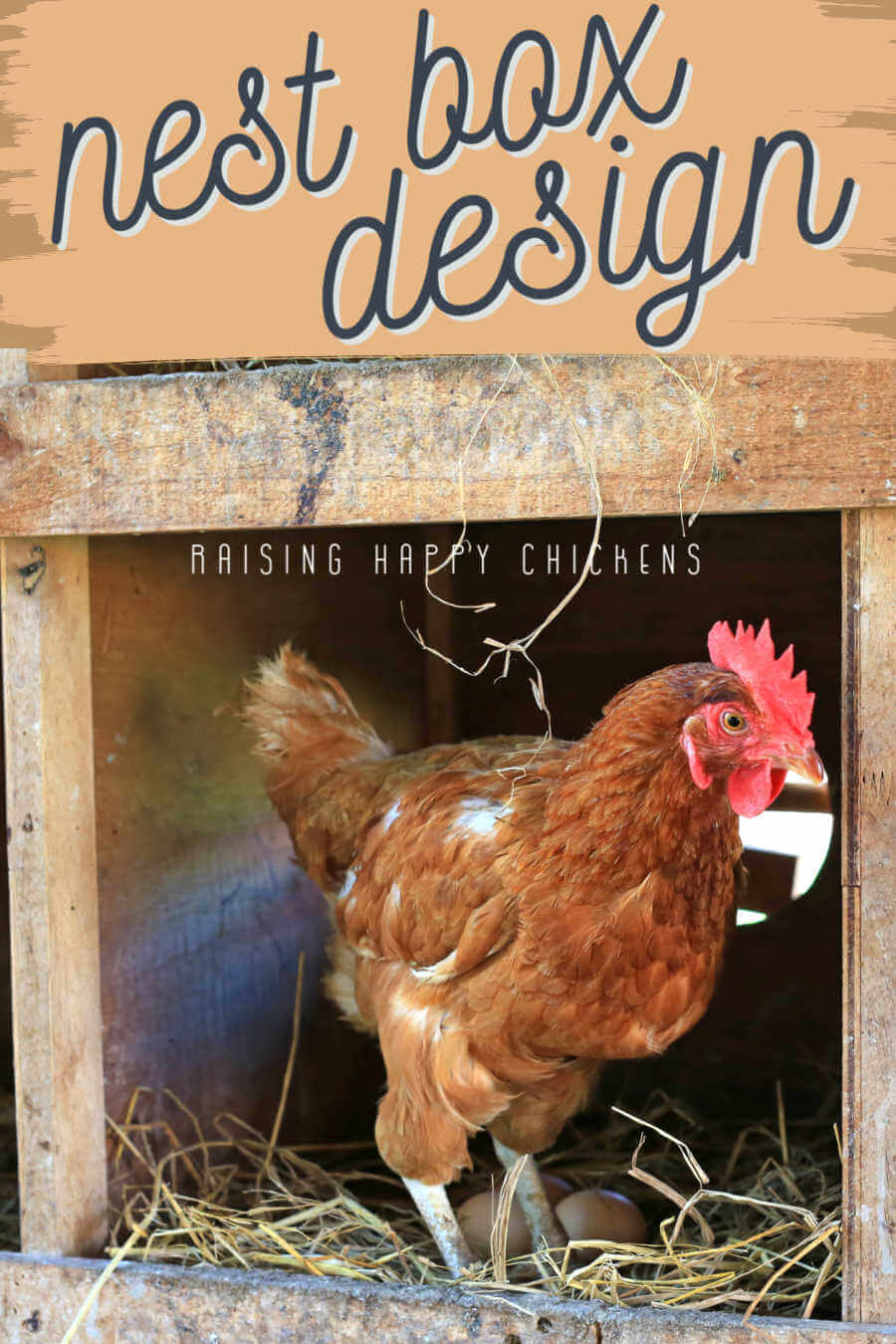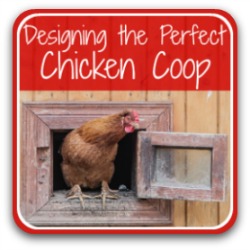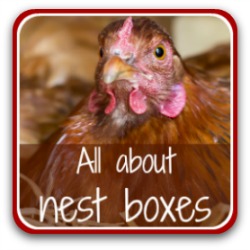Chicken nest boxes: which design will best suit your flock?
Nest boxes are a critical part of any chicken coop. But what should they be made of, and what's the best model?
It's a common question among people new to chicken keeping.
If chickens aren't provided with somewhere safe to lay their eggs, they're likely to start laying in well-hidden places you're unlikely to find until the eggs are at best dirty, at worst bad.
This article covers 6 steps to help you know which kind of design would work well for you. It looks at everything from budget to expensive, DIY to commercial, basic to rollout.
Which works best for you will depend on your own situation: your budget, the number of chickens you have and available space, for example.
Remember that when you start out, a budget option is fine. You can always upgrade later, if chickens are in your future and you want to expand your flock and improve your set-up.
If you're looking for information about where to site nest boxes, what size they should be and what's best to use as liners, you need this article.
If you purchase a product through links on this page, I may receive a small commission at no extra cost to you. I only recommend products I have bought (or would buy) myself, and which I believe will genuinely benefit you. You can read my full disclosure policy here.
Step 1: Know the key features to look for.
There are certain elements of a nest box which it can be helpful for your chickens to have, and others which you'll find will be helpful to you.
Perch.
It's easier for hens hopping in and out of nest boxes if they have something to perch on before and after they lay.
Some nest boxes have perches attached; sometimes they can also act as a deterrent to hens roosting inside the nest box by folding up in front of it, to prevent entry at night.
Sloping roof.
If they have the option of roosting on a narrow perch or having a nice wide, flat space, a hen will generally take advantage of the larger area.
But roosting on top of nest boxes means poop. And poop means they will need to be cleaned very regularly.
Having a sloping top is a deterrent to using nest boxes as a comfy bed.
"Roll away" design.
One thing you'll almost inevitably find is that however many beautiful nest boxes you provide for your hens, they all want to lay in the same one. They will even stand in line to access the favoured box - or alternatively, all try to fit in at the same time.
Which can lead to broken eggs. And broken eggs can lead to egg-eating behaviour, which once started, is very difficult to stop.
One way of avoiding this is to have what's known as a "roll away", or "roll out" design.
This means simply that the floor of the box is sloped gently so that the eggs, once laid, roll towards the front (or back) of the nest box.
Access to the nest box from the rear.
Depending on where you're going to site your nest boxes, you may find it more convenient to be able to gather your eggs from the back.
In that case, look for nest boxes which latch at the back for easy access.
Step 2: Assess the best material for your chickens' nest boxes.
Nest boxes come in a variety of materials, some more suited for purpose than others. When considering which to use, take both the pros and the cons into consideration.
Bear in mind that cleanliness is one of the most important factors to keep chickens safe and healthy, so the ease of keeping nest boxes clean should probably be your key consideration.
Wood.
Probably the most common material, used in traditional nest boxes.
Pros.
- Inexpensive
- Easy to use for DIY projects
- Looks "natural"
- Re-purposed furniture can be used, for example old chests of drawers.
Cons.
- Difficult to clean and keep sterilised
- Doesn't drain, so broken eggs stick to the wood and can attract rodents
- Tends to be preferred by bacteria and bugs such as red mites
- Store bought wooden boxes tend to be made of poorer quality, flimsy wood which doesn't withstand constant use very well
- Cleaning can break the material down over time, so replacements are needed.
Metal.
Pros.
- Easy to clean and sterilise
- Long lasting.
Cons.
- Not so easy to use in DIY projects unless you have a welder
- Metal can become too hot for comfort if you're in a hot climate
- Often has sharp edges which can harm the chickens climbing in and out
- Tend to be more expensive than wooden nest boxes.
Plastic nest boxes.
Pros.
- Easily cleaned and sterilised
- Long lasting
- Tend to be less expensive than metal, though more expensive than wood
- No sharp edges for injuries to occur
- Don't heat up in summer.
Cons.
- Can break down if in direct sunlight
- Tend to be practical rather than attractive.
Step 3: Choose your nest box! Consider wooden designs.
It can be fun, and is certainly good if you're on a limited budget, to find ways of re-purposing wooden items which have the potential to become attractive, quirky nest boxes.
Anything and everything from old chests of drawers to bookcases can become "free" nest boxes, with a little imagination.
Not sure how? Take a look at this short video to see a bookcase converted into nest boxes.
Think too about old barrels, wine crates and even an old doghouse, if you have that much room!
Begin to look at everything around you with a view to using it as a nesting box and you'll see plenty of options.
Want to build your own wooden boxes? Here's a link to an article with plans for a single box.
Or, if you don't have the time or the inclination, there are plenty of wooden nest boxes to be found either at your local feed store or tractor supply, or online...
Beware of these, though. They tend to be flimsy and, as I've said above, a poor quality wood can easily break unless they're reinforced or placed on a solid surface.
Step 4: Finding a metal chicken nest box.
As with re-purposing wooden items you have to hand, take a look around your garage or sheds for metal articles you might be able to use for your chickens.
Old bird cages can work, as can large disused mail boxes - just cut the backs out. Be careful of the sharp edges though - they'd need lining to prevent possible injury.
Lawn mowers that haven't worked for years often have grass boxes which can be lain on their flat side and filled with a straw base. They make roomy places for hens to lay.
Alternatively, find a commercially made version. Look for one with rolled edges to prevent injuries from sharp metal, and preferably with a perch which folds up to provide a barrier to entry at night.
This version, for example, fits the bill for a small flock.
Step 5: Sourcing plastic nest boxes.
The free and best discount nest box options.
Plastic is one of the scourges of the modern age. So when you're looking for nest boxes, think about re-purposing some of yours, rather than sending it to landfill.
Try...
- Old cat litter boxes - properly sanitised, of course
- Old washing up bowls
- Milk, vegetable - or in our case, olive - crates
- Drawers from an old refrigerator or freezer
- Unused pet carriers - these are ideal, as they're enclosed and laying hens love privacy.
If you have nothing like that, inexpensive options include...
- Storage bins from a dollar store (in the UK, pound shop)
- 5 gallon buckets with lids - cut the lid in half to allow an entry point. Again, beware jagged edges.
- Tote boxes - take a look at this video for easy instructions on how to turn these into roomy, cosy nest boxes.
Ready made, store bought plastic nest boxes.
This is a salutary tale of why it's not always best to throw money at chickens.
As far as I'm concerned, these yellow plastic nest boxes in which I invested years ago, when I first had chickens, were almost perfect. Expensive, but, I thought, good value because they'd last a long time.
- Nice cheerful colour, very easy to sanitise, there's nowhere for baddies like mites to hide so they're unbelievably easy to keep clean.
- They lock together so they can be kept tidy, all in a row. They also have holes in the back which help keep laying hens cool in the heat of the summer.
- The perching bar at the front locks in an upright position so that the hens can be prevented from using the nest boxes to roost at night.
- The one drawback was the flat roof. Given the slightest opportunity, that's where my hens would roost and all the dust would settle. You can see it in this photo.
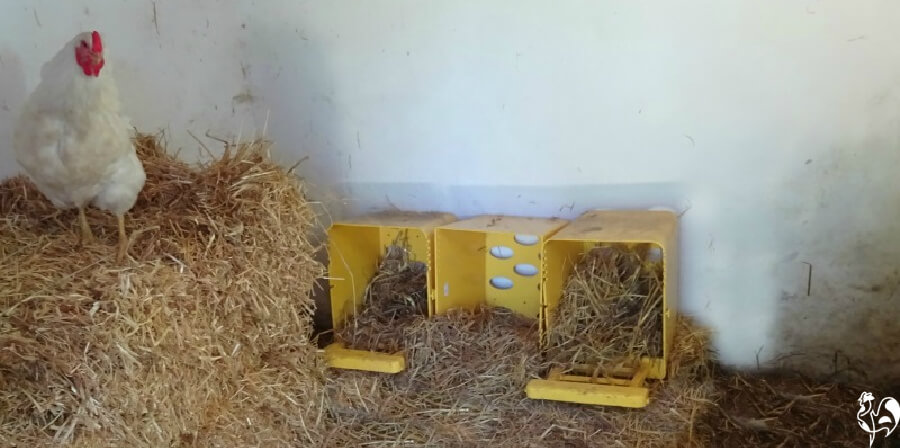 Lucinda Wyandotte ignores the expensive nest boxes and chooses to lay on the straw bale instead.
Lucinda Wyandotte ignores the expensive nest boxes and chooses to lay on the straw bale instead.Did my chickens use them?
Nope. They just didn't seem to like them at all. In fact, they steadfastly refused to lay in them and would find anywhere else they could, rather than use them.
I ended up taking them out of the coop and using them to store vegetables. I now use mostly old olive crates as nest boxes. The hens love them.
Why did they take such a dislike to them? I have no idea. Chickens can be picky.
An alternative...
If using artificial nest boxes appeals to you - and there are lots of positive reasons for using plastic - a box like this one is likely to be more effective. It's smaller, more private - and it has a sloping roof!
Step 6: Considering the roll away or roll out nest box.
They're also known as "drop down" nest boxes. Whatever they're called, the aim is simple: the design must roll the eggs away from the hen so that they keep clean, don't break and hens with a liking for a raw egg in the mornings can't get to them!
The DIY roll away.
There are, inevitably, some expensive options out there, but this video shows how easy it is to convert "ordinary" boxes into roll aways, using just an attached wooden lid, a paint pan and some astro-turf.
Make sure to watch to the end, to see the result of the experiment!
Not ready to do it yourself?
There are some good options for buying online, the main drawback being cost. This, for example, is a good option and comes in two different sizes, to suit both large and small flocks.
The small size can accommodate up to ten hens; the larger one, according to the manufacturer, up to 48 - although if they all decide to lay at once, they definitely would have trouble!
Let me be clear about this: I have not used this nest box because it's not available in Europe. If it were, I would certainly seriously consider it.
Some benefits are:
- The egg tray is reversible, so if you're building your own coop you can collect eggs from the outside.
- It's rated as very easy to clean, which is critical.
- It can be free standing or attached to a wall, depending on your circumstances.
- It's made from galvanised steel, so very hard-wearing and likely to last a lifetime.
Are there any drawbacks?
It's less suitable for larger breeds. Orpingtons, for example, might have problems as, whichever length you choose, it's only 21" deep.
Chickens like to lay facing out of the nest box. In this case, larger hens would need to lay sideways on.
Conclusion: which are the best nest boxes?
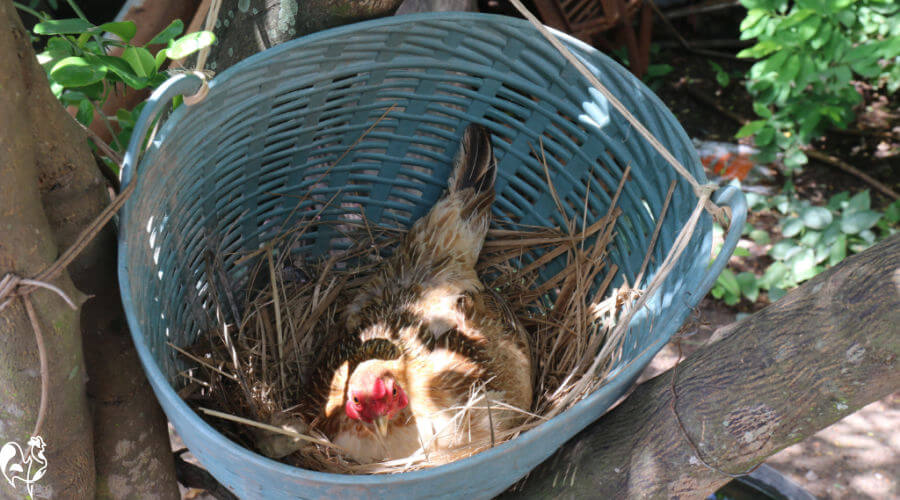 Remember: you and your chickens may have different ideas about what "best nest box design" means!
Remember: you and your chickens may have different ideas about what "best nest box design" means!There's no right or wrong answer here. "Best" is what suits your coop size, your budget and the number of hens you have.
As a new chicken keeper, I wanted to provide my chickens with the best products I could, hence buying the expensive, very good quality, nest boxes.
I learned pretty quickly that my chickens and I did not necessarily have the same idea of what "best nest boxes" means.
These days, I tend to use crates normally used for olive-picking. They're plastic, so very easy to clean and keep sanitised; they're large, so even large breeds fit, and if more than one hen wants to lay in the same crate at the same time, there's enough room.
I do add bedding to the crates: sometimes straw, which is inexpensive and provides a soft landing for the eggs, sometimes nest box liners - see more about those in this article.
Which nest box would suit your situation?
- Eggs need to be collected very regularly to prevent them becoming soiled, to prevent any would-be broody hen from sitting on them and to stop rodents coming looking for a free meal.
- If you will not be able to collect frequently, the roll away design would probably be best. The fact that it literally hides the eggs from the hens and prevents damage, dirt and pecking is a massive benefit.
- On the other hand, if you (or your family) enjoy collecting eggs and can be consistent, then a less expensive, perhaps home made or re-purposed option would be best.
- If you can afford it, choose either metal or plastic as the material for your nest boxes. It's likely to be more expensive, but in the long run you will save money. And, because wood can harbour mites and fleas, a smoother material is beneficial for cleaning.
The final decision is yours, of course. Take the information, assess your situation and your flock and then - provide your hens with the best solution for them and for you!
